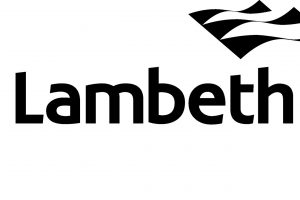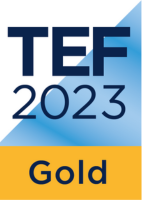Meet the 2019-20 Zsuzsi Roboz Scholars: Jenny Bell
We sat down with our second Zsuzsi Roboz scholar for 2019-20, Jenny Bell, to talk about her artistic vision and what she’s looking forward to in the scholarship.
How did you get started as an artist?
“My background is formally within printmaking. I have always been interested in the egalitarian nature of print and how it connects to the past with the use of redundant technologies. Though I have also studied Illustration, I never aimed to work as a commercial artist. I’ve been teaching art and design since 2007, and it’s important to me that creativity is encouraged within all age groups and that the process of making is not underestimated as a way of feeling one’s way through the world. I have accrued a broad range of skills within my teaching practice which has allowed for a more flexible approach to materials and process, but also has shaped my desire to not be limited by one medium.
“My interest in characters and imaginary worlds initially sparked my desire to draw or perform. I am now trying to bridge the gap between ‘Artist as Maker’ and ‘Artist as Life’ to locate a more private expression within my work, drawing upon my years of research and refinement of practical skills.”
How would you describe your type of art?
“I would describe myself as multi-media fine artist. The art I make tends to have a clear concept, almost like a design brief. I find myself a set of parameters to create a focus. These boundaries tend to be located in ideas or research, and sometimes a location. I am playful in my approach but take interest in ‘Othering’ and the concept of the strange and familiar, how our perception and lived experience controls the space between the self and the other (and vice versa), along with how we can become Othered from ourselves. The non- or transitional space that is often unnoticed or unseen, yet still impacted by forces at play. The ‘un’, the ‘non’ – that which is not important or not validated by society, culture and or the self. I’m fascinated by communication: verbal and written, how visual signs, symbols, marks and materials talk to the audience. Though I am bound by drawing, pattern making and the two-dimensional, I have over time used materials and processes that have a deeper expression of my ideas. Photocopying is a fundamental part of my initial experimentation.”
Tell us a bit about your artistic vision and style.
“Distortion through movement is a visual aesthetic and process that has become key to my artistic vision and style over the last few years. Before I would have been thinking about distortion in a more theoretical way, but now I’m exploring the experiential nature of what it is to destroy the visual plain, and building it up by creating pattern-based structures. The breakdown of the real, the transition from original source though the corruption of image, pattern, surface, fabric. I’m interested in process and artists who embrace or value the actions that allow them to arrive at their end point. This may be due to the systematic process of printmaking. There are, of course, ways to subvert the system, but I think it’s the order and structure of how to make a perfect print that interests me. It’s tangible – you can learn it in a very straightforward way. However there is a detachment from the imagery, that is very unique to the artist/designer. This duality, or duality as a concept, is key. Holding two opposites, examining their difference – much like Helen Chadwick. Though Chadwick played with the tension, I aim to remove it. In some ways I would like to embrace the neutral yet systematic, non-binary expression of Angus Martin’s work and person.”
How did you hear about the Zsuzsi Roboz Scholarship?
“Through the Morley website, and as a tutor here at Morley. I had started taking classes at weekends and saw that these moments of creative action and contemplation had a positive impact on my work.”
Why did you decide to apply?
“I felt the program style suited my creative process. The opportunity to explore new processes and materials with the specialist tutors allows me to experiment whilst having an ongoing dialogue with professional artists and designers. I have a holistic approach to lifelong learning, I’m interested in embracing the new and challenging my perspective. Like many artists, making artwork is embedded within my everyday life. The scholarship’s flexible programme allows its scholars to design their own schedule; it’s important for me as I am also dedicated to my profession as an artist educator.
What do you hope to get out of the scholarship?
“Space and time in the speedy world of contemporary life is limited, and so on the surface I hope to gain, through the classes I attend, mentor meetings and exhibition planning, a collection of moments to build a new body of work. Within this system I imagine I will make a deeper connection to the subconscious actions that drive my work forward, to sit in the creative space to discover the answers to the barriers I will face. I want to allow my practical experiments to surprise and enlighten my existing aesthetic choices, and the particulars of my visual language – as I say, I value the process of making as much as the art work or object. Research, or rather, gaining new knowledge, is a crucial way of finding my way through to the conclusion of the works.
“I am influenced by theory – psychological, philosophical and social – along with cinema and literature, play, and of course colour, in light as well as pigment. Ultimately I hope to reconnect and disconnect with my thinking and making, to make a new body of work, but also a new way of presenting my work in a gallery space.”
Is there anything in particular that you hope to learn, or an existing skill that you hope to develop further?
“With a background in prints on paper and fabric and digital media, I have a wide set of skills that I use to make my work. I’m interested in exploring moving image and documentary film/photography in more depth, whilst having the opportunity to create more ambitious tests within analogue and digital print for fabric. I’m inspired by artists such as Sarah Sze who work across moving image, sculptural form and 2D works. I hope to gain a deeper insight into the photos and films I instinctively make, in relation to the patterns I create that both map and interrogate surface, as well as forming space and objects. I’ve started Life Drawing and Painting, in part to retrain my eye to see beyond my idea of body parts and body as a whole, and of course to simply engage in the tradition of life drawing. Painting is something I have never explored so I am looking forward to taking the time to explore this. I hope this will impact the printed textiles I make in the Textiles classes I attend on Thursdays.
“I’m attending a Women in the Written Word course that studies both the published writings and private correspondence of women of the Victorian era, as writing is an integral part of my process as a way to locate my thoughts and, increasingly, as a creative source. I want to gain a broader knowledge of how women have used words to express themselves and create social change, and I hope to find a closer observation of how audience impacts the way artwork is viewed or experienced.
“I am also attending Therapeutic Yoga sessions at Morley to think about how my body moves, how I can stretch and find new positions that dislodge my own reality of being in my body. Again, this goes back to the idea of transition and corruption of the real – in this instance the ‘real’ is my posture, my unstretched form.”
You can see more of Jenny’s work on her website, e.t.lp, or follow her on Instagram at @etlifeprojects. To find out more about the Zsuzsi Roboz Art Scholarship, visit our information page, and to keep up with the current scholars and see the work of our scholarship alumni, visit our Art Scholarship blog.
We sat down with our second Zsuzsi Roboz scholar for 2019-20, Jenny Bell, to talk about her artistic vision and what she’s looking forward to in the scholarship.
— []









